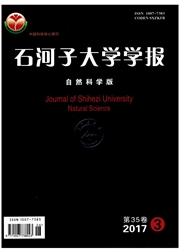

 中文摘要:
中文摘要:
为探讨真核翻译延伸因子1A2在宫颈癌中的表达以及临床病理学意义。收集新鲜宫颈癌组织和宫颈正常组织样本各10例,运用实时荧光定量PCR方法检测了eEF1A2基因的mRNA表达水平。收集宫颈癌患者60例、宫颈上皮内瘤样病变患者45例和慢性宫颈炎患者35例石蜡标本组织,采用免疫组织化学SP方法检测eEF1A2基因在宫颈组织中的蛋白表达状况。qRT-PCR结果显示,eEF1A2基因在宫颈癌组织mRNA表达水平较正常宫颈组织明显增加,差异有统计学意义(P〈0.01)。免疫组织化学结果显示,eEF1A2蛋白质表达强阳性率、弱阳性率和阴性率表达在宫颈癌组织分别为46.6%,31.0%和22.4%,而在慢性宫颈炎组织中分别为21.2%,48.5%和30.3%,差异具有统计学意义(P〈0.001)。由此可知,eEF1A2基因的表达增高可能在宫颈癌的发生、发展中发挥一定的作用,其机制有待进一步研究,观察eEF1A2表达情况对于宫颈癌的临床诊断、病理分级有参考价值。
 英文摘要:
英文摘要:
To explore the expression of eukaryotic translation elongation factor 1 alpha 2(e EF1A2) gene and its significance of clinic pathological in cervical cancer. The expression of e EF1A2 gene at m RNA level was analyzed by quantitative real-time-PCR method in 10 normal cervical tissues and 10 cervical cancers. The protein expression of e EF1A2 gene was detected by immunohistochemical methods in 35 chronic cervicitis tissues, 45 cervical intraepithelial neoplasia tissues and 60 cervical cancers. As the results showed that the expression of e EF1A2 gene at m RNA level by q RT-PCR in cervical cancer tissues were significantly increased than that in normal cervical tissues(P〈0.01). The expression of e EF1A2 protein level by immunohistochemistry with rate of strong positive, rate of weak positive and proportion of negative in cervical tissue were 46.6%, 31.0% and22.4%, respectively. However, e EF1A2 protein expression level in chronic cervicitis were 21.2%, 48.5% and 30.3%, respectively.The difference was statistically significant(P〈0.001). The expression of e EF1A2 gene at m RNA level and protein in cervical cancer are significantly increased than that in non cervical cancer tissues. Therefore, the results suggest that abnormal expression of e EF1A2 may play an important role in the genesis and development of cervical cancer.
 同期刊论文项目
同期刊论文项目
 同项目期刊论文
同项目期刊论文
 期刊信息
期刊信息
